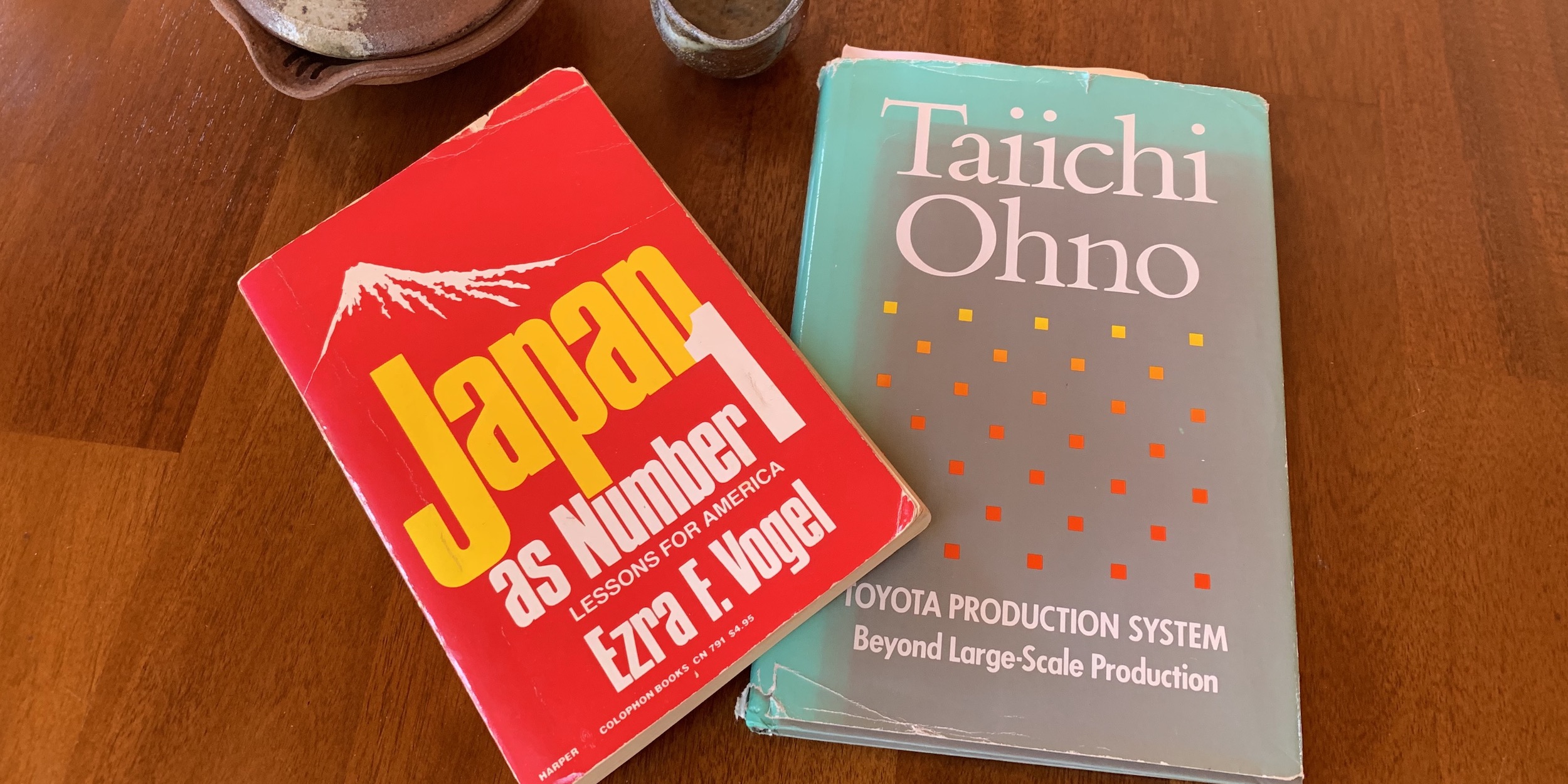
You can't make countries great without great jobs
WOMACK'S YOKOTEN – Small firms represent the backbone of the economy, and there is no doubt lean can help them improve and grow – by making the jobs they offer great. Without it, countries won't be great either.
Words: Jim Womack, Founder and Senior Advisor, Lean Enterprise Institute
In recent weeks I've been visiting small manufacturing and service companies in the northeast US as part of an LEI project on lean transformation in small businesses. What I've found is what I feared – a combination of low wages, traditional management and mass production. The result is sobering: These are small enterprises with fewer than 250 employees in sectors of the economy that are not internationally traded (meaning they don't face globalization and weren't moved off shore.) They have kept jobs at home but pay their entry-level workers $10 to $12 per hour with minimal benefits. Most of the entry-level workers I encountered were working second jobs to make ends meet. These are the working poor whose plight is the backstory to much of what is going on in the political realm.
In that realm there is much discussion on mandating higher wages (a loosely defined "living wage") or putting tariffs on imports or reducing company taxes so they can invest. But I'm afraid these expedients won't do much good for society without changing the way work is done. The hard-working employees in the companies I observed simply don't create more than $10 or $12 of value for customers per hour worked. So increasing wages but continuing to work in the same way will either lead to a pass through of higher prices to consumers (to pay the higher wages) or a loss of government revenue (from lower company income taxes as profits decline) or a loss of jobs as sales fall in response to higher prices, or all three. And tariffs won't help either. These businesses serve local markets with customized products or time-sensitive goods and services – think of the manufacturer of building materials customized to the needs of a specific building or the small printer of short runs with short lead-times. They have no foreign competition to counter with trade barriers.
(You can read a similar story about much larger low-wage companies in the retail sector – led by Walmart – in Zeynep Tan's The Good Jobs Strategy. These firms are also free of foreign competition but pursue what she calls a "bad jobs strategy" due to the way they manage work. She contrasts this with the "good jobs strategy" at firms like Costco and Trader Joe's where employees are multi-skilled, work full shifts rather than part time, are engaged in improving the work, and have much higher wages. I recommend her research to every member of the Lean Community. She offers creative thinking on how big retailers can pay higher wages and better benefits while making customers and owners better off by changing the way work is done. When her recommendations are combined with the ideas Dan Jones and I presented a decade ago in Lean Solutions, about multiple retail formats, deep engagement with customers, and smoothly flowing end-to-end value streams for fulfillment, the results can be very powerful.)
Small companies of the sort I have been visiting represent the core of the economy, accounting for about 50% of private sector jobs in the United States. And it's easy to see how lean thinking and lean tools applied consistently in a framework of lean management can make a major difference. For example, at one company I watched, the inability to clarify what the customer actually wanted meant that about half of the total work was really rework to get the product right. In another the simple inability to cut parts accurately every time meant that most assembly work involved trimming the parts to fit or adding spacers. And in a third, the incapability of every process step meant that half of the total work was inspection and repairs.
The political discussion today is focused on making countries great. But I believe that the bedrock of any great country must be great jobs – those which create high value per hour to permit high wages and a fulfilling work experience. And the creation of great jobs can be the work of every member of the Lean Community. We simply need to help small enterprises apply what we learned long ago in large enterprises. However, we may need to change our methods.
The coaching model pursued by most members of our community either occurs inside big companies or as paid advisors to big companies. These big companies are often brain dead: They want to change dramatically as a theoretical proposition and are willing to pay for expensive advice, but they struggle to change anything at all in practice. By contrast, small companies, particularly when there is an owner committed for the long run, can change dramatically and quickly but don't know how and can't afford expensive advice.
In the past, governments across the US have assisted with the cost problem for small businesses by subsidizing lean consultants to help individual firms. However, much of the government-funded coaching I have observed has been ineffective. The tools introduced by the consultants were useful in theory but there was no management system put in place to achieve sustainable results. A more practical way forward that we are exploring at LEI may be to create clubs of small companies who can share the costs of a coach over five or six firms without need for subsidies, a coach who can focus on the management system as much as on the tools. These enterprises can spur each other by signing up to make rapid progress on solving their core business problems and boosting the value creation of their employees and then verifying their progress at periodic meetings at the gemba involving the senior leaders of every participating company.
This method was actually pioneered by Taiichi Ohno in the late 1970s after he retired from Toyota and took along a number or colleagues from his campaign to apply lean thinking to the 300 firms in Toyota's supplier group. The brilliance of Ohno's method in his second career was that he always started with the key business issue facing each company and challenged management to think anew about its root cause and the best countermeasure before applying lean tools. (You can read about this approach in NPS New Production System: JIT Crossing Industry Boundaries by Isao Shinohara, written in 1985. It's long out of print but still available at Amazon and other websites. Slightly crazy in tone but fun and highly useful.)
As we think about working with the members of an LEI club of small firms I'm mindful that those of us in the Lean Community have always said that we won't work with enterprises that use lean knowledge to eliminate jobs. But I'm thinking that we now need to say that we won't work with organizations who aren't dedicated to creating great jobs either. These are jobs that pay wages high enough to live on through higher productivity and that provide fulfilling work through employee engagement. I realize that this is a tall mountain but we can't begin to climb it if we don't at least acknowledge the need for a great job for every employee.
This is my last column of 2016. It's been fun to go gemba-walking this year in enterprises across the US and from Brazil to Malaysia to Guatemala to the UK, walks that have provided the raw materials for this column. I hope I have offered a few useful ideas for readers, and for my hosts as well. And I absolutely hope you will have a happy holiday and encounter good fortune (aided, of course, by lean practice) in the New Year.
THE AUTHOR

Management expert James P. Womack, is the founder and senior advisor to the Lean Enterprise Institute. The intellectual basis for the Cambridge, MA-based Institute is described in a series of books and articles co-authored by Jim himself and Daniel Jones over the past 25 years. During the period 1975-1991, he was a full-time research scientist at MIT directing a series of comparative studies of world manufacturing practices. As research director of MIT’s International Motor Vehicle Program, Jim led the research team that coined the term “lean production” to describe Toyota’s business system. He served as LEI’s chairman and CEO from 1997 until 2010 when he was succeeded by John Shook.
Read more


FEATURE – There is more to logistics than an ancillary process that supports the rest of the company. But then, why do we never have a plan for it, like we do for manufacturing?


FEATURE – John Shook remembers the work of Ezra Vogel and Norman Bodek and discusses how, in their own way, each of their contributions help us to understand the Toyota Production System.


INTERVIEW – Instituto Lean Management in Barcelona is getting ready to host its first summit in a few years. We caught up with President Oriol Cuatrecasas to hear what attendees can expect.


FEATURE – The Covid-19 pandemic has reminded us all that the nature of the work has changed forever. The author discusses remote work and how Lean Thinking can help you make the most of it.

